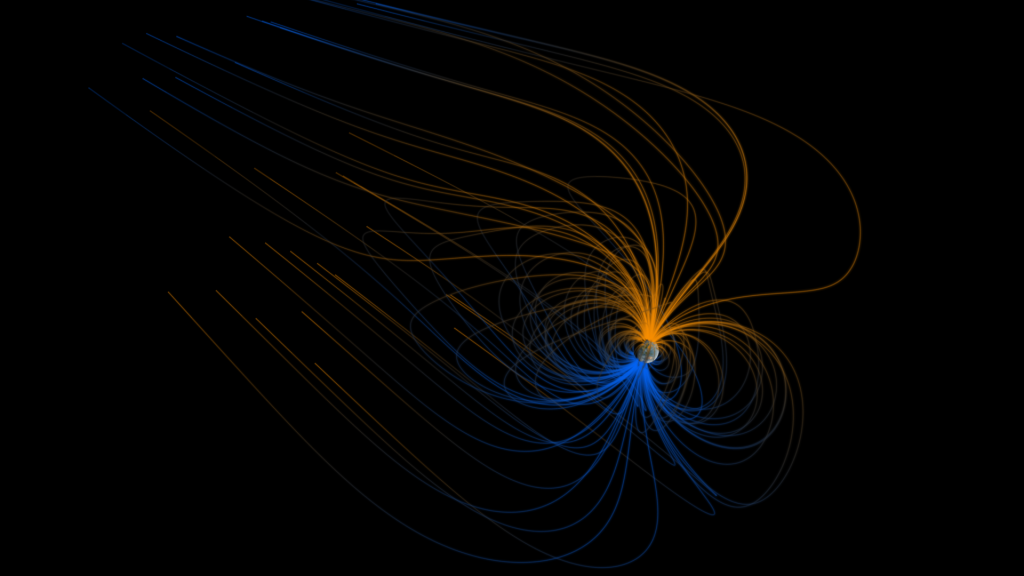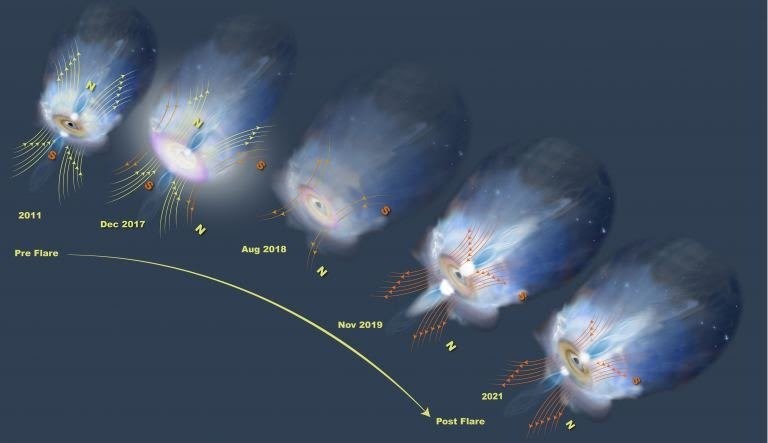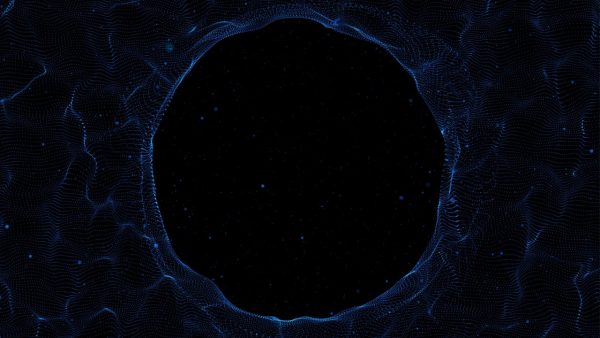Black holes are extraordinarily strong cosmic engines. Quasars and other active galactic nuclei get their energy from them (AGNs). This is because matter interacts with its massive gravitational and magnetic fields.
Although a black hole does not have its own magnetic field, the dense plasma that surrounds it as an accretion disc does. Read: Plasma Swirling Around Black Holes May Unfold Previously Unexplained Light and Heat Emissions
How Does An Accretion Disk Form In A Black Hole?
The charged particles of the plasma whirl around the black hole, creating an electrical current and magnetic field.
As the direction of the plasma flow does not vary on its own, the magnetic field must be very steady. Imagine astronomers’ amazement when they discovered evidence of a magnetic reversal in a black hole’s magnetic field.
What Is Magnetic Field?

A magnetic field can be thought of as a simple magnet with a north and south pole. When the orientation of that imaginary pole flips, so does the orientation of the magnetic field. This phenomenon is frequent among celestial bodies , including stars.
The 11-year cycle of sunspots recorded by astronomers since the 1600s is caused by our Sun’s magnetic field reversing every 11 years. Every few hundred thousand years, even the Earth’s magnetic field reverses.
Read more: Hubble Spotted ‘A Mysterious Ancestor of Supermassive Black Hole’ Hiding At The Dawn of Time
What Happens In Magnetic Reversal?

A magnetic reversal, on the other hand, better fits the facts. As the researchers demonstrated, when a black hole accretion disc undergoes a magnetic reversal, the fields near the accretion disk’s outer edges diminish first. As a result, the disc will be able to heat up more quickly.
At the same time, the smaller magnetic field means that charged particles create fewer X-rays. The disc returns to its original state once the magnetic field has completed its reversal.
A Strange Light Form A Distant Galaxy
An automated sky survey discovered a significant alteration in a galaxy 239 million light years away in 2018. In visible light, the galaxy known as 1ES 1927+654 had brightened by a factor of 100. The Swift Observatory captured its X-ray and ultraviolet brilliance shortly after its detection.
A review of historical observations of the region revealed that the galaxy in real began to brighten at the end of 2017.
This fast brightening was assumed to be caused by a star passing close to the galaxy’s supermassive black hole at that time. A tidal disruption event would result from such a near encounter, ripping the star apart and disrupting the flow of gas in the black hole’s accretion disc.
Is This Theory Appropriate?
The researchers looked at data of the galactic flare from radio to X-ray wavelengths. One of the things they noticed was that the X-ray intensity quickly decreased. Charged particles spiralling within powerful magnetic fields commonly created X-rays, so this implied a dramatic change in the magnetic field surrounding the black hole.
At the same time, the visible and ultraviolet light intensities increased, indicating that areas of the black hole’s accretion disc were becoming hotter. These aren’t the kinds of consequences you’d expect from a tidal upheaval.
Conclusion
This is the first time a galactic black hole’s magnetic reversal has been observed. We now know they can happen, but we have no idea how common they are. More data will be required to determine how many times a galaxy’s black hole may act as a switch hitter.
